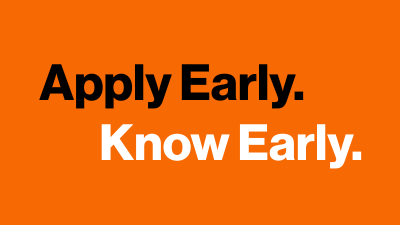Web Development Minor
- RIT /
- Rochester Institute of Technology /
- Academics /
- Web Development Minor
Overview for Web Development Minor
This minor provides students with a firm foundation in web development. The web has become a global, essential, and ubiquitous information delivery medium. Hence, knowledge of how the web works and how to effectively develop dynamic websites adds considerable value to computing majors. This minor provides foundational skills in web development, starting with simple sites, moving through dynamic client-side and server-side functionality, and culminating in web-based systems that create and access various information services.
Notes about this minor:
- This minor is closed to students majoring in web and mobile computing.
- Posting of the minor on the student’s academic transcript requires a minimum GPA of 2.0 in the minor.
- Notations may appear in the curriculum chart below outlining pre-requisites, co-requisites, and other curriculum requirements (see footnotes).
- At least nine semester credit hours of the minor must consist of specific courses not required by the student’s degree program.
The plan code for Web Development Minor is WEBD-MN.
Curriculum for 2024-2025 for Web Development Minor
Current Students: See Curriculum Requirements
| Course | |
|---|---|
| Prerequisites | |
|
Students should complete course work in discrete mathematics and a two-course programming sequence prior to beginning course work for this minor. |
|
| Required Courses | |
| ISTE-140 | Web & Mobile I* This course provides students with an introduction to internet and web technologies, and to development on Macintosh/UNIX computer platforms. Topics include HTML and CSS, CSS3 features, digital images, web page design and website publishing. Emphasis is placed on fundamentals, concepts and standards. Additional topics include the user experience, mobile design issues, and copyright/intellectual property considerations. Exercises and projects are required. Lec/Lab 3 (Fall, Spring). |
| ISTE-230 | Introduction to Database and Data Modeling † A presentation of the fundamental concepts and theories used in organizing and structuring data. Coverage includes the data modeling process, basic relational model, normalization theory, relational algebra, and mapping a data model into a database schema. Structured Query Language is used to illustrate the translation of a data model to physical data organization. Modeling and programming assignments will be required. Note: students should have one course in object-oriented programming. (Prerequisites: ISTE-120 or ISTE-200 or IGME-101 or IGME-105 or CSCI-140 or CSCI-142 or NACA-161 or NMAD-180 or BIOL-135 or GCIS-123 or GCIS-127 or equivalent course.) Lec/Lab 3 (Fall, Spring). |
| ISTE-240 | Web & Mobile II ‡ This course builds on the basics of web page development that are presented in Web and Mobile I and extends that knowledge to focus on theories, issues, and technologies related to the design and development of web sites. An overview of web design concepts, including usability, accessibility, information architecture, and graphic design in the context of the web will be covered. Introduction to web site technologies, including HTTP, web client and server programming, and dynamic page generation from a database also will be explored. Development exercises are required. (Prerequisites: (ISTE-120 or CSCI-140 or CSCI-141 or GCIS-127 or NACA-161 or IGME-105 or IGME-101 or NMAD-180 or GCIS-123) and (ISTE-140 or NACA-172 or IGME-230 or IGME-235) or equivalent course.) Lec/Lab 3 (Fall, Spring). |
| ISTE-340 | Client Programming This course will explore the analysis, design, development, and implementation of client-side programming in the context of Internet technologies, mobile devices, Web-based client systems and desktop applications. Students will learn to design and build usable and effective interactive systems, clients, and interfaces. Key features addressed will include browser and platform compatibility, object reusability, bandwidth and communications issues, development environments, privacy and security, and related technologies and APIs. Programming is required. (Prerequisites: (ISTE-240 or IGME-330) and (GCIS-124 or ISTE-121 or ISTE-200 or CSCI-142 or CSCI-140 or IGME-106 or IGME-102 or GCIS-127) or equivalent courses.) Lec/Lab 3 (Fall, Spring). |
| ISTE-341 | Server Programming This course provides in-depth work in server-side programming. Students will develop dynamic, data centric web pages and systems, and server-side information services that will be available to clients implemented in a variety of software technologies. Topics include XML parsing, generation, and consumption; web configuration and security; design patterns; web service structures, and application security. Programming projects are required. (Prerequisites: ISTE-340 and (ISTE-230 or CSCI-320) and (SWEN-383 or SWEN-262) or equivalent courses.) Lec/Lab 3 (Fall, Spring). |
| SWEN-383 | Software Design Principles and Patterns § Quality software designs and architectures reflect software engineering principles that represent best contemporary practice. This course focuses on explicating these fundamental principles, examining a set of design and architecture patterns that embody the principles, and applying patterns appropriate to a design problem in a given context. Restricted to IST majors only. (Prerequisites: ISTE-240 or equivalent course.
Co-requisite: ISTE-340 or equivalent course.) Lec/Lab 3 (Fall, Spring). |
* ISTE-140 can be replaced with IGME-230 or IGME-235.
† ISTE-230 can be replaced with CSCI-320.
‡ ISTE-240 can be replaced with IGME-330.
§ SWEN-383 can be replaced with SWEN-262.
Contact
- Dan Bogaard
- Associate Professor
- School of Information
- Golisano College of Computing and Information Sciences
- 585‑475‑5231
- dan.bogaard@rit.edu
School of Information










